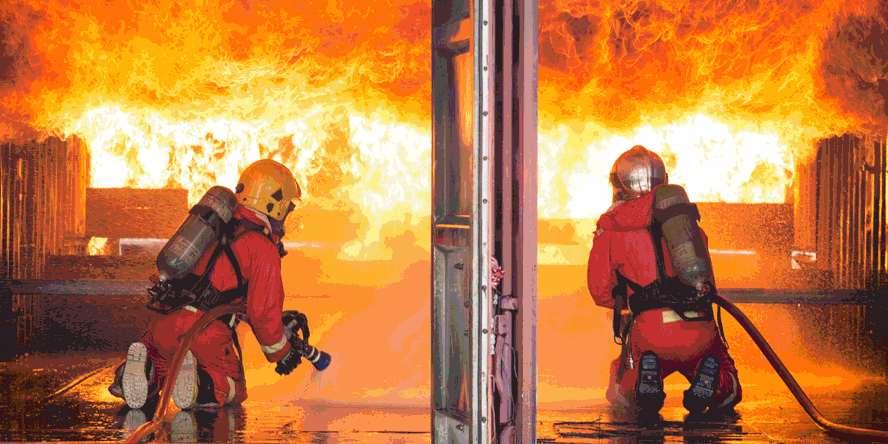The EPD (explosion protection document) is a formal document which every site where flammable gases, liquids and dust which may form explosive mixtures with air are stored or processed is obliged to have.
Preparation of an EPD is a process
We should mention the time needed to prepare and approve the EPD, as insufficient time available for its preparation is one of the potential indications hinting that the document was prepared “on the fly”, using the copy-and-paste method. Sometimes the market offers preparation of this document as quickly as in ca. 7 days. Meanwhile, our experience shows that reliable preparation of the document usually takes several weeks. This means about five to six weeks on average. Excessive haste and document authors looking for shortcuts is a simple way to make mistakes with potential, serious consequences.
Moreover, even EPDs that may seem to have been created according to the art may not be free of errors and defects that disqualify them from the standpoint of explosion safety.
Why is this the case? Preparation of an EPD document requires collection and analysis of many documents, such as:
- safety data sheets for the substances used,
- descriptions of the technologies used,
- workplace-specific instructions,
- construction projects,
- ventilation calculations,
- inspection protocols,
- layout drawings of the premises,
- EC type examination,
- Declarations of Conformity.
The analysis of the aforementioned documentation requires not only theoretical and legal knowledge, but most importantly, it also requires practical knowledge and extensive experience in the field of protecting industrial sites against explosions.
EX zone range larger than necessary
Lack of the mentioned experience of persons preparing the explosion protection document means that they may have a tendency, e.g. to determine a wider range of explosion hazard zones than is necessary.
Regardless of whether this is an unintended mistake or a deliberate act, such approach is “safe” from the point of view of the author of the document. Larger explosive atmosphere zones mean that a larger area of an industrial site should theoretically be safer.
Why did we write this paper then, if the conclusion is that this approach should be safer?
Because more often than not, it is not. Following this line of thinking, one could immediately conclude that the entire site area should be covered by an explosion hazard zone. Meanwhile, the purpose of the Explosion Risk Assessment and Explosion Prevention Document is to determine the actual explosion hazard zones, i.e. zones at locations where such hazards actually occur. On one hand, we would then ensure the minimum level of safety within the industrial site, as required by the ATEX Directive, and on the other hand, we would not make the investor cover additional, and definitely non-trivial, costs.
The experience of the person preparing the EPD is crucial in the case of dusts
Let us use standards to explain how experience (or lack thereof) may influence the unjustified increase of investor costs. As we have mentioned, if the production process uses substances able to form explosive atmospheres with air, explosion hazard zones must be determined around the emission sources of these substances. The zones are determined on the basis of two EN 60079 series standards, namely:
- EN 60079-10-1 „Explosive atmospheres – Part 10-1: Space classification – Gaseous explosive atmospheres”
- EN 60079-10-2 „Explosive atmospheres. – Part 10-2: Space classification – Dust-based explosive atmospheres”.
In the case of gaseous explosive atmospheres, the aforementioned standard includes a detailed process defining gas explosion hazard zones, together with mathematical formulas used to calculate the range of individual zones. The explosive properties of the individual gases are constant, and thus determination of the zones is reduced to mathematical formulas, regardless of the experience of the person preparing the explosion risk assessment.
In the case of dust-based explosive atmospheres, zone determination is completely different. Explosive properties of dusts depend, inter alia, on particle dimensions and moisture content. This means that sometimes it is possible that the dust does not display any explosive properties at the start of the technological process and becomes strongly explosive after the process. It is therefore impossible to reduce the determination of dust explosion hazard zones and their range to the process and the mathematical formulas described in detail in the standard. The experience of persons determining the zones is crucial, and in particular, their knowledge of:
- technological processes and their influence on changes to explosion properties of individual dusts;
- explosion protection and the opportunities and limitations of their application in individual cases.
Does every person determine dust-based hazard zones differently?
If the experience of persons preparing the explosion risk assessment is crucial for determination of explosion hazard zones, this may indeed be the case that dust-based zones determined by every person will be different. In the case of gases, calculations based on mathematical formulas are able to precisely show the location of the boundary of the hazard zone. In the context of dust-based explosive atmospheres, substantive arguments resulting directly from experience will be of key importance. As long as the person determining the explosion hazard zones is able to present arguments supporting the necessity of determination of a specific range of the zone, this is the correct procedure. However, it is often the case that people without extensive experience with dust-based explosive atmospheres tend to designate hazard zones with a much broader range, without supporting such decisions with substantive arguments. And such conduct directly results in additional, significant costs for the investor.
Larger EX zone = higher cost
Why is it so important? In the designated areas:
- explosion-proof equipment must be used;
- work instructions should be prepared;
- a system of work permits in the zones should be implemented at the site;
- special tools should be used for work within the zones;
- operating instructions for explosion-proof equipment should be prepared.
All of this makes purchase of more expensive, explosion-proof machinery and components, non-sparking tools, installation of explosion-proof lighting, or implementation of an electrical installation that is intrinsically safe and explosion-proof necessary.
There are also some “hidden” costs associated with all the procedures and permits that must be strictly followed and observed in explosion hazard areas. Their observance often extends the duration of the work, e.g. by having to issue permits or remove explosive atmospheres before the work can begin. Assuming that if an hour has to be spend on these activities before the work begins, then this time will total up to days or even weeks in the perspective of a year – and these are additional labour costs.
The paper accepts everything
An old saying goes that paper accepts everything. Thus, if the person preparing the EPD specifies the range of zones much wider than the range of the actual hazard in the document, the person kind of forces the investor to make much higher expenditures on safety at the site than it is actually required.
As an example, we can refer to a document, in which the author wrote that the explosion hazard zone covers the entire premise without any justification of such a conclusion, i.e. without a reference to regulations. And such a provision means that the aforementioned requirements must be met within the entire premise. Of course, there may also be a case in which an analysis shows that the zone indeed covers the entire area of the premise, but such a conclusion must be based on a reliable analysis





